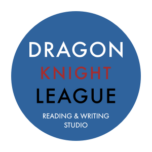All DKL Kids Articles are original works by DKL Studio.
All Copyrights reserved for Dragon Knight League, LLC.
A Parents’ Guide to Help 5 to7 Year-Old Kids with Early Writing
Children are visual creatures, there is no doubt about that.
This understanding is tangible through the countless publications that aim to guide children through all subjects via visualization: reading and writing, math, science and even sports.
This is very true, every day DKL teachers are learning about how children are deeply “visual creatures”, and we never cease to be amazed.
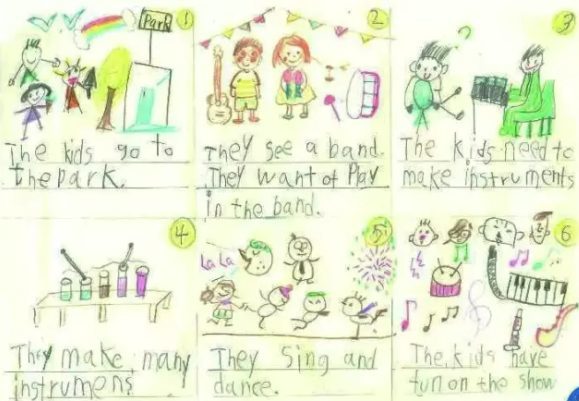
The Kids Band- By Tobey, Age 5
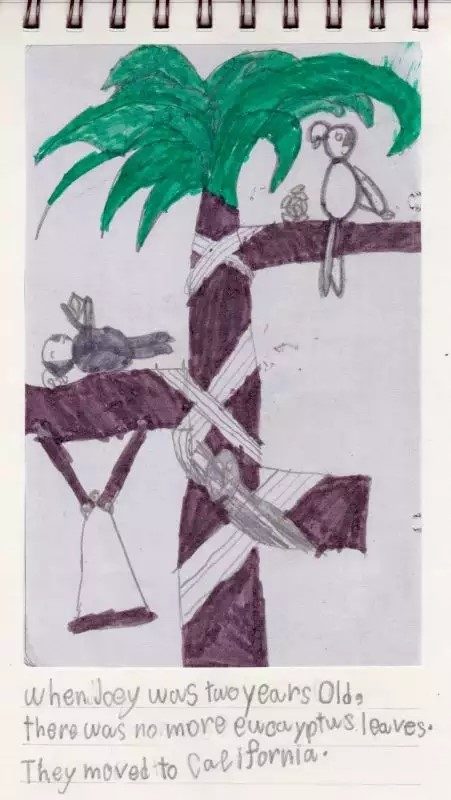
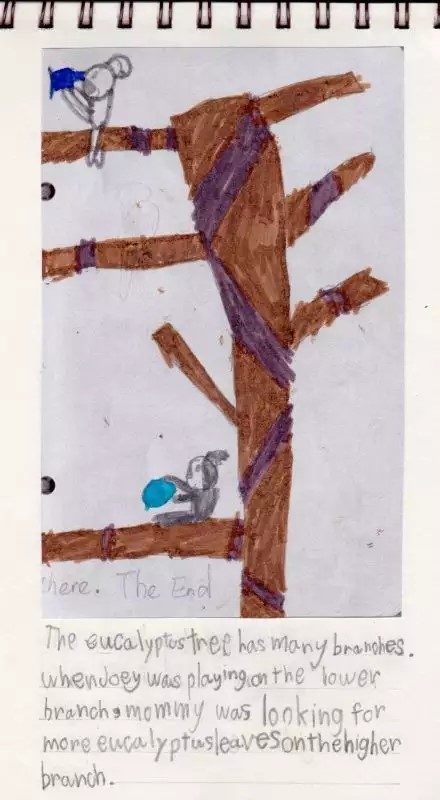
Joey the Koala Baby- By Zoey, Age 6
From Columbia University: The Lucie Calkins Methods
Many DKL teachers are trained in the Lucie Calkins methods. Lucie Calkins is the founder of the Teacher’s College at Columbia University, and she is one of the most influential promoters for “visualization in early writing”.
Lucie Calkins’ one important approach is to:
Focus on small moments in a fleeting life.
She and three other scholars conducted a study across a 15-year time span, and her first recommendation on forming effective narrative is:
Draw it on paper. And draw actions.
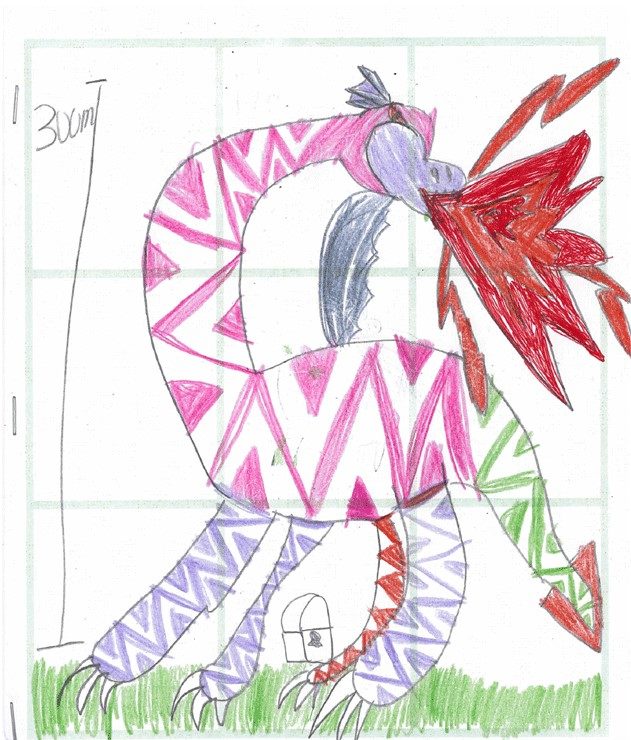
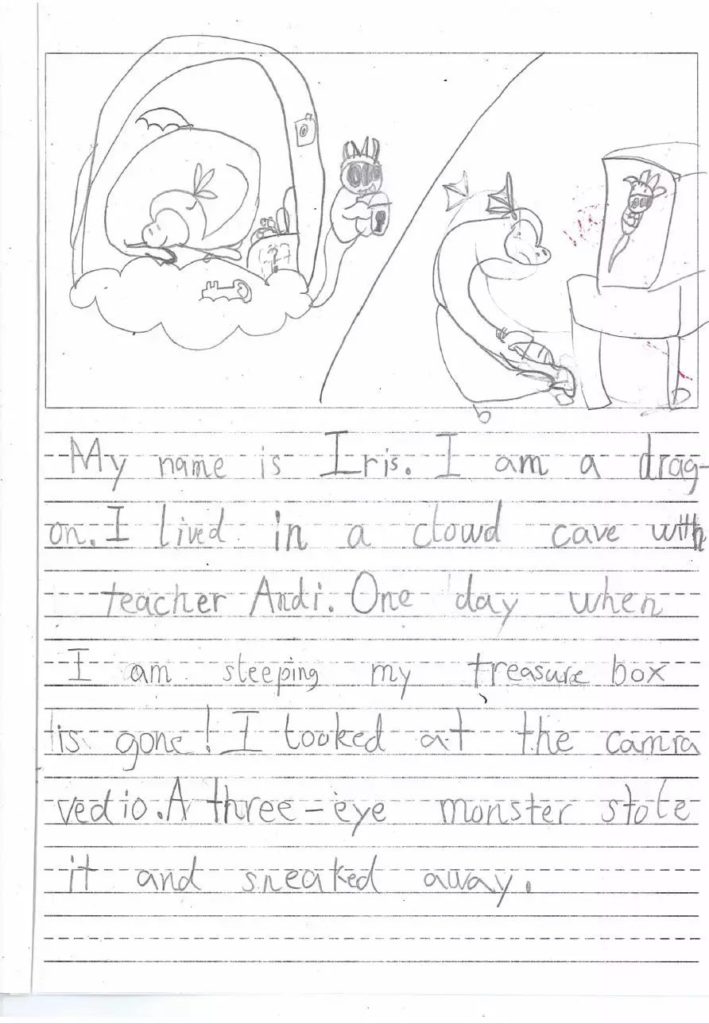
My Little Fire Dragon- By Iris, Age 6
Illustrative Thinking
One important observation by Lucie Calkins, is that once the 5 to7 year-olds enter the stage of “illustrative thinking”, the active level of their words starts to quickly evolve:
The scattered, illogical narrative is now falling into a logical order, or a chronological order. These are all benefits from focusing on actions.
Once the 5 to7 year-olds start to “write about people” by “writing about actions,” their narrative becomes much more active: a horse is walking under a rope; people are kissing and dancing; a dog is drinking from a bowl; everyone is doing something with everyone else…
By writing about actions, kids can start writing about people and events.
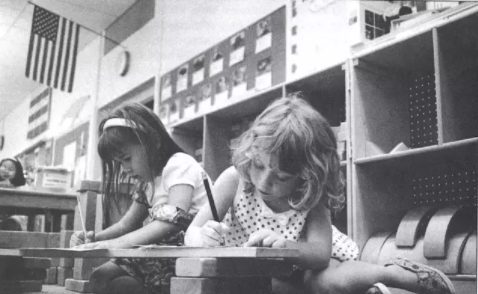
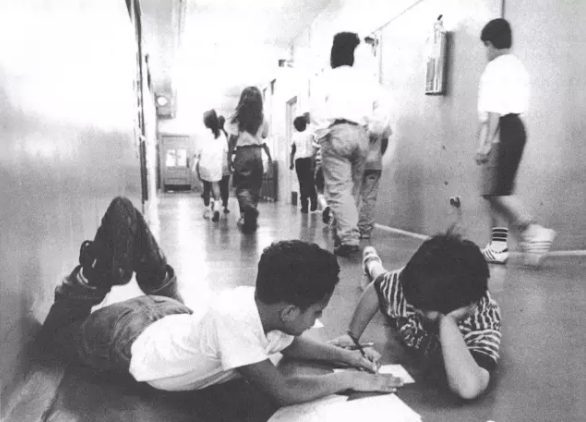
Study Project Photos by Lucie Calkins
When Visualization is Not Suitable
Lucie Calkins also advises that sometimes, you must intervene a visualization process. Why is that?
Sometimes, some kids are so absorbed by the joy of drawing that they establish the drawings as the main body of a narrative. In this case, writing will no longer be the purpose of visualization; writing becomes the “subtitle” of a drawing which defeats the purpose of the visualization method.
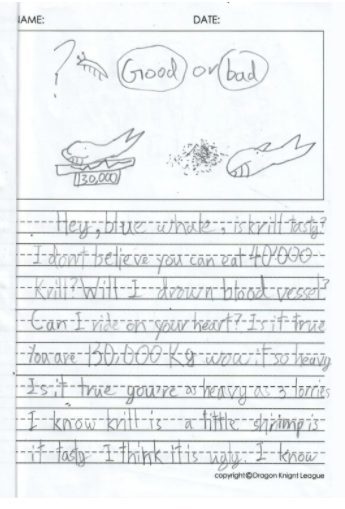
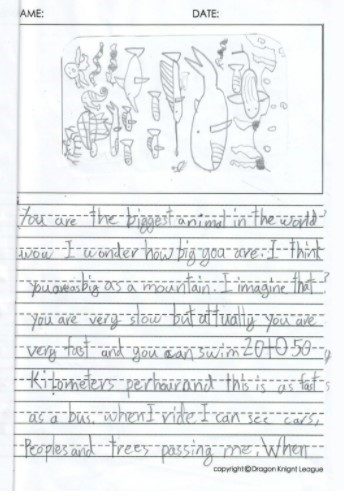
A Letter to Blue Whale- By Leopold, Age 7
One effective way to avoid this, is to separate the drawing and writing steps. An adult can guide the kids to make a simple visualization, then immediately start to write about it. Especially for those kids who are visually inclined, keep reminding them to draw a “rough picture”, and remind them to fill in the rich details with words, not with drawings.
When checking homework, keep an eye on the quality of the words used: are the words painting a clear picture? Do they reflect clear and complete thoughts?
If they are, then the visualization step is working.
